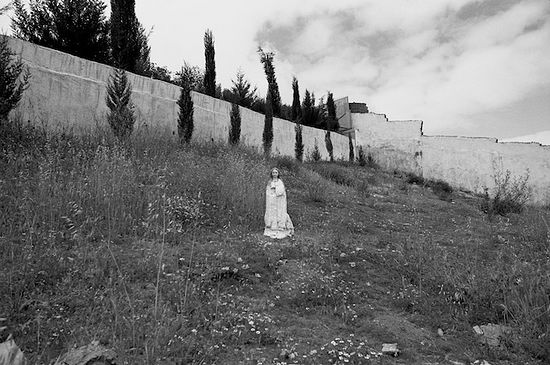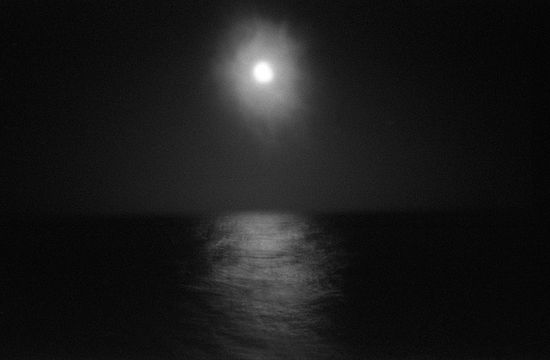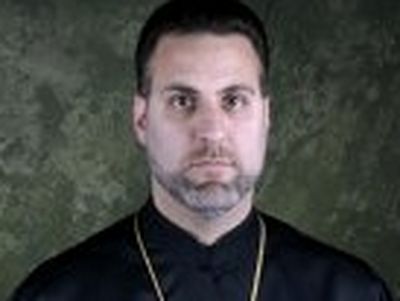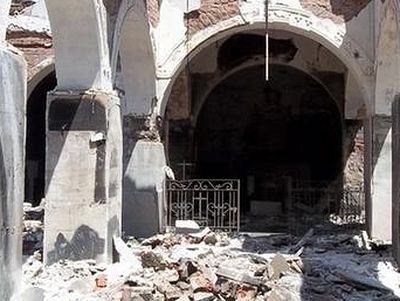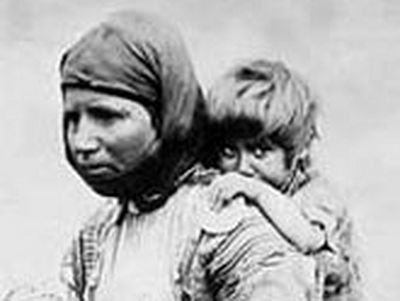Source: Hyperallergic Media
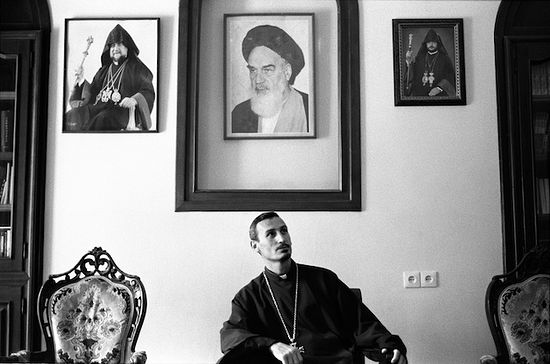 Father Milorad Vaghinagh is an Armenian priest In Tabriz, Iran. In his office he has to keep the portraits of Roullah Khomeini, 2011. (all images courtesy Linda Dorigo)
Father Milorad Vaghinagh is an Armenian priest In Tabriz, Iran. In his office he has to keep the portraits of Roullah Khomeini, 2011. (all images courtesy Linda Dorigo)
In the United States, Canada, or Europe, where Christians form the religious majority, it’s strange to consider parts of the world where they are not only uncommon, but also persecuted. They make up just 2% of the population in Israel, where Christianity was born, a number that rises to a mere 5% if you include the whole region known as the Middle East. And those numbers are dwindling. The past few decades’ wars and political oppression have fueled a diaspora that has driven — and continues to drive — many from their ancestral homelands.
Italian photographer Linda Dorigo moved to the region in 2011 to better understand the Christian experience there. She spent the next two and a half years traveling from a base in Beirut to Christian communities in Iran, Egypt, Israel, the West Bank, Gaza Strip, Jordan, Turkey, and Syria. Dorigo spurned hotels for people’s homes, where she gained greater access to and a deeper understanding of the culture. During her first trip to Iran, she took a five-day pilgrimage into the mountains, spending the night inside one of the oldest churches in the world. “That’s the way in which Christians of the Middle East talk about their history, about their land. It’s something they love to show, but they show it with intimacy,” she told Roads & Kingdoms.
The resulting series Rifugio will be released in book form by Schilt Publishing this spring. Its expressive, high contrast images take their title from the Italian word for refuge; it not only alludes to the closely knit communities wherein Christians of West Asia and North Africa practice their faith, but it also hints at the isolation that fuels local fears and stereotypes about them. “Personally, what I can do as a photojournalist is to try and open small doors about this region, just to make people think,” Dorigo said. “It’s important that we know each other. And if you don’t have the chance to know people directly because you live in a village in the mountains of Italy … you should train your heart and your mind to know better, to know who is the other, because he really is just your brother.”
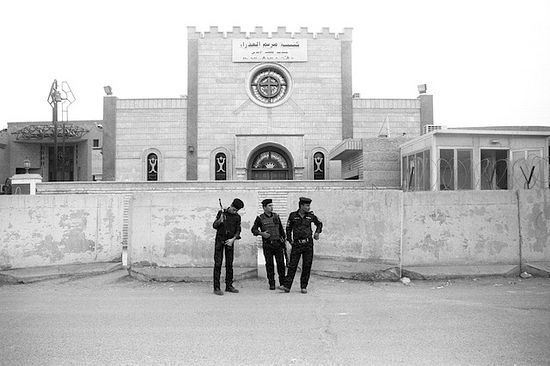 Iraq, Baghdad, November 2012. “On Phalestine Street, the church of Santa Maria is manned by a permanent checkpoint after an assassination attempt in 2010.”
Iraq, Baghdad, November 2012. “On Phalestine Street, the church of Santa Maria is manned by a permanent checkpoint after an assassination attempt in 2010.”
![Egypt, Deir Abu Hennis, July 2012. “The majority of Christians of the village is Orthodox [sic]. There is also a small Catholic church and the relations between the two communities are great. During festivities such as weddings or baptisms representatives of each go to pay homage to others.”](http://www.pravoslavie.ru/sas/image/101966/196697.p.jpg?mtime=1423161924) Egypt, Deir Abu Hennis, July 2012. “The majority of Christians of the village is Orthodox [sic]. There is also a small Catholic church and the relations between the two communities are great. During festivities such as weddings or baptisms representatives of each go to pay homage to others.”
Egypt, Deir Abu Hennis, July 2012. “The majority of Christians of the village is Orthodox [sic]. There is also a small Catholic church and the relations between the two communities are great. During festivities such as weddings or baptisms representatives of each go to pay homage to others.”
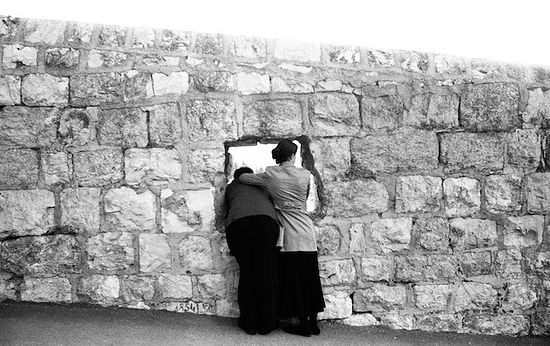 Jerusalem, Mount of Olives, December 2012. “In East Jerusalem, the Israeli government is planning to build new colonies that would cut any link between the Arab part of the city and the West Bank.”
Jerusalem, Mount of Olives, December 2012. “In East Jerusalem, the Israeli government is planning to build new colonies that would cut any link between the Arab part of the city and the West Bank.”
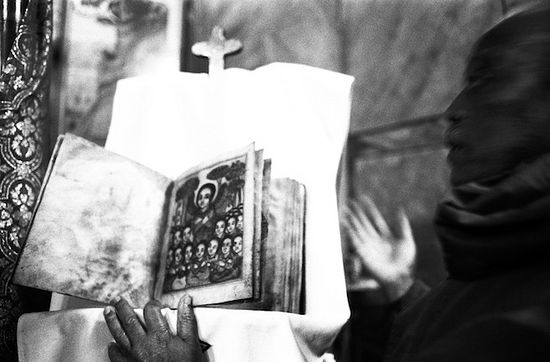 Jerusalem, December 2012. “In the Ethiopian church near Damascus Gate, the guardian shows an ancient version of the Bible. In the Christian community of Jerusalem between Damascus Gate and Jaffa Gate, the Catholic, Orthodox, Egyptians and Ethiopians are divided between small spaces and winding paths.”
Jerusalem, December 2012. “In the Ethiopian church near Damascus Gate, the guardian shows an ancient version of the Bible. In the Christian community of Jerusalem between Damascus Gate and Jaffa Gate, the Catholic, Orthodox, Egyptians and Ethiopians are divided between small spaces and winding paths.”
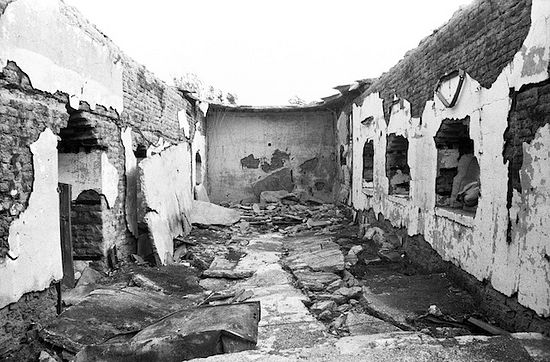 Rojava (Syrian Kurdistan), Gharduka village, January 2014. “This village is uninhabited, but people come here during summer time. The only church has been destroyed by Jabat al Nusra militants who bombed it after having used as a trench.”
Rojava (Syrian Kurdistan), Gharduka village, January 2014. “This village is uninhabited, but people come here during summer time. The only church has been destroyed by Jabat al Nusra militants who bombed it after having used as a trench.”
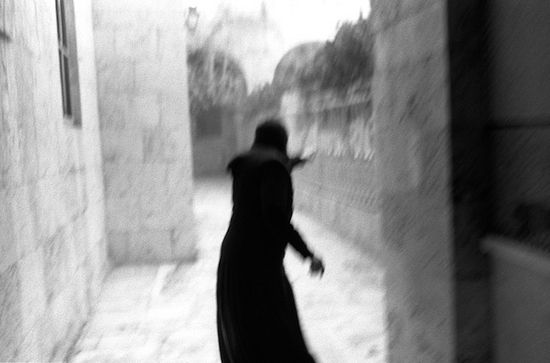 Saydanya, Syria, January 2014. “A nun in Our Lady Monastery in Saydnaya. In this village, 30 km far from Damascus, and in the near Maaloula, there are many Christians monastery. In one of them, Mar Takla, 12 nuns have been kidnapped by Jabat al Nusra.”
Saydanya, Syria, January 2014. “A nun in Our Lady Monastery in Saydnaya. In this village, 30 km far from Damascus, and in the near Maaloula, there are many Christians monastery. In one of them, Mar Takla, 12 nuns have been kidnapped by Jabat al Nusra.”
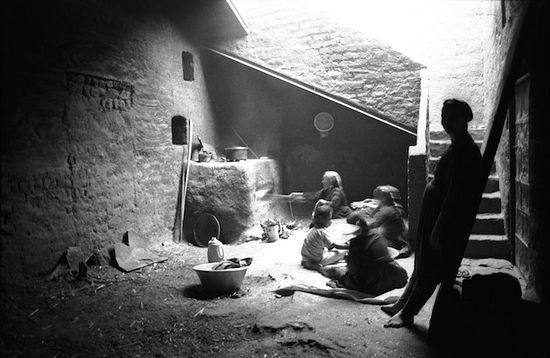 Cairo, Egypt, July 2012. “A Zabbaleen family living in Mokattam village, nicknamed ‘Garbage City,’ located at the foot of the Mokattam Mountains. Over 90% of Zabbaleen are Copts.”
Cairo, Egypt, July 2012. “A Zabbaleen family living in Mokattam village, nicknamed ‘Garbage City,’ located at the foot of the Mokattam Mountains. Over 90% of Zabbaleen are Copts.”
![Ani, Turkey, August 2013. “The ruins [of the Armenian church], close to the border with Armenia, have became a touristic attraction.”](http://www.pravoslavie.ru/sas/image/101967/196703.p.jpg?mtime=1423162139) Ani, Turkey, August 2013. “The ruins [of the Armenian church], close to the border with Armenia, have became a touristic attraction.”
Ani, Turkey, August 2013. “The ruins [of the Armenian church], close to the border with Armenia, have became a touristic attraction.”
